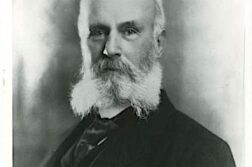The following paper was first delivered at the New England Women’s Studies Conference in March 2005.
THERE ARE many challenges in writing lesbian-feminist plays, and today I want to talk about two of them. The first is working without antecedents in the popular consciousness, without a canon of lesbian dramatic work from which to draw. The second is the particular kind of audience response to the work which generally results from this lack of a cultural context.
Playwriting is an intensely compressed art form, taking place in a single location, over a two-hour period of time, with real human beings. Plays rely on narrative and dramaturgical conventions in order to work around these restrictions. Conventions are a form of shorthand, based on common cultural assumptions. They involve familiar paradigms and archetypes, and also stereotypes. Unfortunately, the narrative and dramaturgical conventions I inherited came from 2,000 years of theatre written by, for, about, and serving the interests of men. The lesbian character does not fit into the patriarchal paradigm except as an object of ridicule, pity, disgust, or prurient interest. The lesbian can be the superfluous spinster, or the male sexual fantasy, or the vampiric seducer of women, all of whom would otherwise presumably become compliant heterosexual wives and girlfriends. And, of course, the lesbian character can be a tormented outcast who kills herself. Obviously, within this paradigm I could not tell the stories I wanted, the stories that reflected my truth.






